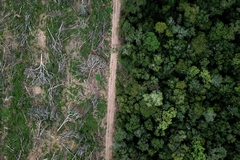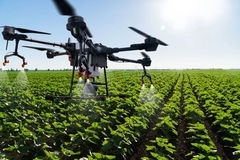Outlook for Biotech Crop Adoption Indicates Continued Global Growth
United States continued to be the lead producer of biotech crops globally, at 69 million hectares, with an average adoption rate of approximately 90 percent across principal biotech crops. Brazil ranks second only to the USA in hectarage, with 30.3 million hectares planted. For the third consecutive year, Brazil had the largest increase in the world at 4.9 million hectares, representing an impressive year-over-year increase of 20 percent.

Feb 9 2012 – Global adoption of biotech crop technology continues at unprecedented rates. During 2011, an additional 12 million hectares were planted representing an annual growth rate of 8 percent over 2010, according to Clive James author of the annual biotech crop report released by ISAAA (International Service for the Acquisition of Agri-biotech Applications).
“Unprecedented adoption rates are testimony to overwhelming trust and confidence in biotech crops by millions of farmers worldwide,” said James. “Since biotech crop commercialization in 1996, farmers in 29 countries worldwide made more than 100 million decisions to plant and replant more than 1.25 billion hectares – an area of crop land 25 percent larger than the total land mass of the United States or China.”
During 2011, 160 million hectares were planted (up from 148 million in 2010) by 16.7 million farmers in 29 countries, including 19 developing countries and 10 industrial countries. Such adoption represents a 94-fold increase in hectares planted since 1996, making biotech crops the fastest adopted crop technology in recent history.
In developing countries, adoption was twice as fast and twice as large.
Developing countries proved an appetite for biotech crop technology during 2011. Developing countries leading biotech adoption are Brazil and Argentina in Latin America; China and India in Asia; and South Africa on the continent of Africa, and together represent 40 percent of the global population.
Growth rate for biotech crops in developing countries at 11 percent or 8.2 million hectares, during 2011, was twice as fast and twice as large as industrial countries at 5 percent or 3.8 million hectares.
Developing countries grew approximately 50 percent of global biotech crops in 2011 and are expected to exceed industrial country hectarage in 2012. Additionally, more than 90 percent of farmers worldwide (equivalent to over 15 million farmers) are small resource-poor farmers in developing countries, up 8 percent or 1.3 million since 2010, said James.
Marked advancements achieved across the world.
Advancements are being experienced throughout the world, and are very important to the overall landscape of global biotech commercialization.
Highlights noted in the report include:
• United States continued to be the lead producer of biotech crops globally, at 69 million hectares, with an average adoption rate of approximately 90 percent across principal biotech crops.
• Brazil ranks second only to the USA in hectarage, with 30.3 million hectares planted. For the third consecutive year, Brazil had the largest increase in the world at 4.9 million hectares, representing an impressive year-over-year increase of 20 percent.
• India celebrated a decade of successful cultivation of biotech cotton, which has transformed the cotton crop into the most productive and profitable crop in the country, with 10.6 million hectares planted during 2011.
• China adopted biotech cotton on 71.5 percent of cotton hectarage or 3.9 million hectares. Such growth was driven by 7 million small, resource-poor farmers, who on average farm only one-half of one hectare.
• Philippines reported a 20 percent increase in hectarage of biotech maize, planting >600,000 hectares. The Philippines is the only country in Asia which plants biotech maize.
• Africa planted 2.5 million hectares of biotech crops, and is making advancements with field trials in the regulatory process for additional biotech crop countries and crops.
With such large growth in Brazil, global leaders are recognizing the country as an “engine” for worldwide growth.
“Brazil has a fast-track approval system and has created three-streams of technology to support growth,” said James. “The model includes: proprietary biotech crops from the private sector adopted on more than 30 million hectares; public/private sector partnerships which has already delivered an approved product; and the capacity to develop and deliver a ‘home-grown’ biotech crop – a virus resistant bean. Collectively, these three streams of technology provide Brazil with a diversified pipeline of new biotech products for the country. This approach is highly effective for Brazil and a key lesson for other countries across the world,” said James.
During the sixteen years of biotech crop commercialization, many lessons have been learned across the industry. From regulatory and approval considerations to nurturing strong biotech pipelines, sustained growth and development has been achieved through insight and global innovation driven by industry and government alike.
“Three requirements are needed for continued success in biotech crop commercialization,” said James. “First, countries must secure political will and support; second, develop innovative game-changing trait technologies which will have high impact; and third, ensure science-based, time- and cost-effective deregulation, in order to provide farmers new technologies for timely continued growth and productivity.”













